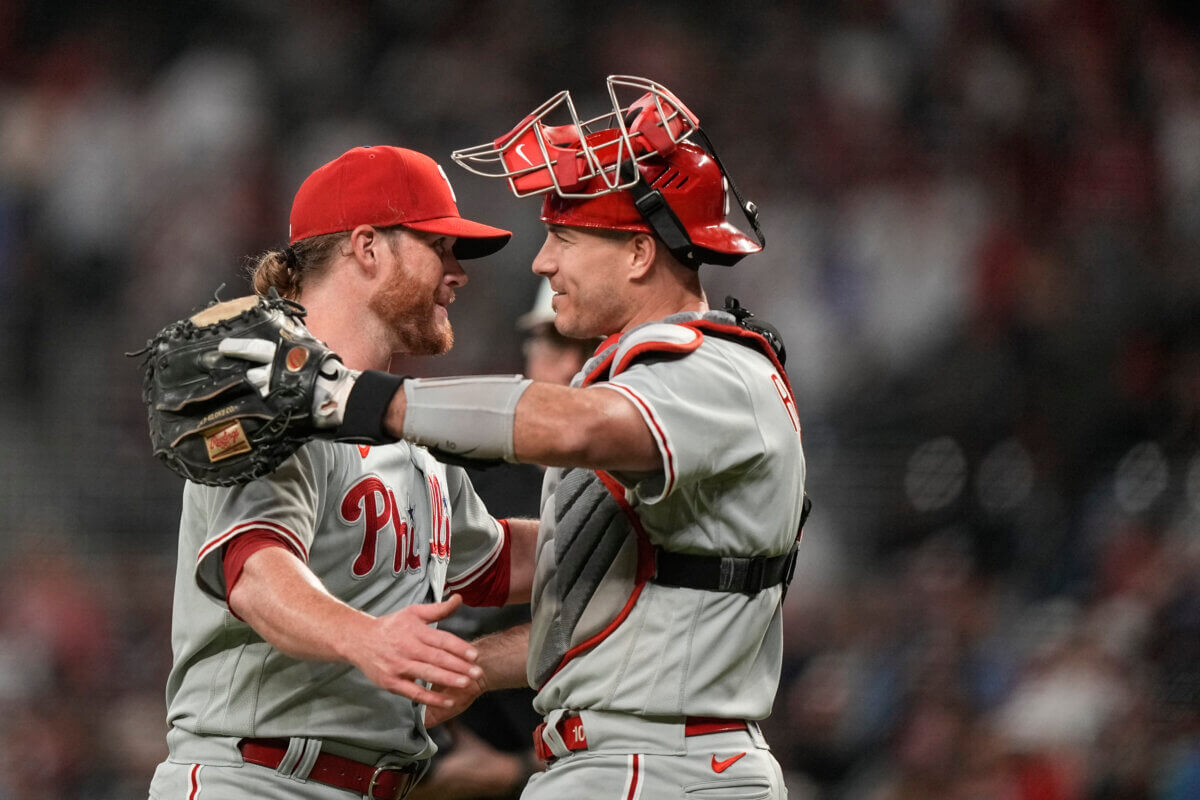History of Phillies Play-by-Play

The history of Phillies play-by-play broadcasting is a captivating journey that mirrors the evolution of the team itself, capturing the hearts of generations of fans. From the early days of radio to the digital age, the voices of these announcers have become synonymous with the Phillies, shaping the team’s identity and fostering a deep connection with the city of Philadelphia.
Early Days of Phillies Broadcasting
The early days of Phillies broadcasting were marked by innovation and a growing desire to bring the excitement of the game to listeners across the region. In 1927, the Phillies became one of the first teams in Major League Baseball to broadcast games on radio, ushering in a new era of fan engagement. The first broadcast was on WFIL, and while the quality was rudimentary by today’s standards, it marked a significant step in connecting the team with its fans. These early broadcasts relied on simple descriptions of the action, with announcers often relying on their imagination to paint vivid pictures for listeners.
Notable Phillies Broadcasters
The legacy of Phillies broadcasting is defined by a roster of legendary announcers who have left an indelible mark on the team’s history.
- Byrum “Harry” Kalas: Harry Kalas, the iconic voice of the Phillies for over 40 years, is widely considered one of the greatest baseball broadcasters of all time. His passionate calls, signature “Holy Cow!” exclamations, and deep understanding of the game captivated generations of fans. Kalas’s voice became synonymous with Phillies baseball, and his legacy continues to inspire broadcasters today.
- Richie Ashburn: A Hall of Fame player and a beloved broadcaster, Richie Ashburn joined Kalas in the booth in 1977. Ashburn’s insightful analysis and charming personality complemented Kalas’s enthusiasm, creating a dynamic duo that brought a unique blend of knowledge and entertainment to Phillies broadcasts.
- Gene Elston: A long-time Phillies broadcaster, Gene Elston was known for his deep knowledge of the game and his ability to connect with fans. Elston’s calls were often filled with historical anecdotes and insightful observations, making him a respected voice in the Phillies booth.
- Chris Wheeler: Chris Wheeler, a fixture on Phillies broadcasts for over two decades, has become a familiar voice to fans. His energetic calls and passion for the game have made him a beloved figure in the Phillies broadcasting booth.
Significance of Play-by-Play in Building Fan Loyalty and Team Identity
Play-by-play broadcasting has played a crucial role in building fan loyalty and shaping the team’s identity. The voices of these announcers have become integral to the fabric of the Phillies, connecting generations of fans to the team’s triumphs and heartbreaks. The emotional resonance of these calls, coupled with the intimate connection they create between fans and the game, have fostered a deep sense of belonging and pride among Phillies supporters.
Key Figures in Phillies Play-by-Play

The history of Phillies broadcasting is rich with iconic voices that have brought the excitement of the game to generations of fans. From the early days of radio to the modern era of television, these broadcasters have shaped the way fans experience the team. Their unique styles and contributions have left an enduring legacy on the Phillies and their fanbase.
A Legacy of Voices
The evolution of Phillies broadcasting can be traced through the distinct styles and contributions of key figures. Each era brought its own flavor to the play-by-play, reflecting the changing landscape of broadcasting and the evolving tastes of the audience.
| Broadcaster | Years | Notable Achievements |
|---|---|---|
| Byrum Saam | 1949-1970 | Known for his distinctive voice and his ability to capture the excitement of the game. Saam was a pioneer of Phillies radio broadcasting, setting the standard for future generations. He was inducted into the Philadelphia Sports Hall of Fame in 1997. |
| Harry Kalas | 1970-2002 | Widely considered the greatest Phillies broadcaster of all time, Kalas was known for his infectious enthusiasm, his signature “Oh, my!” call, and his ability to connect with fans. He was inducted into the Baseball Hall of Fame in 2002. |
| Richie Ashburn | 1970-1980 | A Hall of Fame player and a beloved broadcaster, Ashburn brought a unique perspective to the booth. He was known for his insightful analysis and his ability to connect with the game’s history. |
| Gene Elston | 1979-2002 | A gifted storyteller and a master of the play-by-play, Elston was the perfect complement to Harry Kalas. His deep knowledge of the game and his ability to connect with fans made him a popular figure in Philadelphia. |
| Mike Schmidt | 2005-present | A Hall of Fame third baseman and a natural broadcaster, Schmidt brings a wealth of experience and insight to the booth. He is known for his insightful analysis and his passion for the game. |
| Tom McCarthy | 2015-present | The current voice of the Phillies, McCarthy is a gifted storyteller and a master of the play-by-play. He is known for his enthusiasm and his ability to connect with fans. |
The Impact of Play-by-Play on the Fan Experience: Phillies Play By Play

The magic of baseball, for many fans, isn’t just about the game itself. It’s about the shared experience, the camaraderie, and the emotional connection fostered by the voices that bring the game to life. Phillies play-by-play announcers, through their expert commentary, passion, and unique personalities, weave a tapestry that enriches the fan experience, transforming passive viewers into active participants in the game’s narrative.
Enhancing the Enjoyment of Watching Phillies Games
Play-by-play announcers act as the bridge between the game on the field and the fan at home or in the stadium. Their role goes beyond simply describing the action; they provide context, insight, and a narrative that elevates the viewing experience. Their words paint vivid pictures, allowing fans to immerse themselves in the game’s nuances and intricacies. They highlight key moments, explain strategic decisions, and build anticipation for thrilling plays, creating a sense of shared excitement.
Specific Elements of Play-by-Play Contributing to Fan Excitement and Engagement
The power of play-by-play lies in its ability to captivate and engage the audience. Here are some key elements that contribute to fan excitement:
- Descriptive Language: Play-by-play announcers utilize vivid language to bring the action to life. They use evocative verbs and descriptive adjectives to paint a picture of the game, making fans feel as if they are right there in the stadium. For instance, a commentator might describe a home run as “a towering blast that sailed over the wall, a no-doubter from the moment it left the bat.”
- Historical Context: By referencing past games, players, and team history, play-by-play announcers provide a sense of continuity and context, adding depth to the current game. For example, a commentator might mention a player’s previous success against a particular pitcher, enhancing the anticipation and understanding of the current at-bat.
- Player Insights: Announcers often share their knowledge of players, their strengths and weaknesses, and their strategies. This insight allows fans to gain a deeper understanding of the game and appreciate the nuances of individual performances.
- Call of Key Moments: The way announcers call crucial moments, like a game-winning home run or a strikeout with the bases loaded, is often what fans remember most. The excitement and energy in their voices mirror the emotions of the fans, creating a shared experience of joy or disappointment.
- Humor and Personality: A good play-by-play announcer can inject humor and personality into their commentary, keeping fans entertained and engaged even during lulls in the game.
The Role of Play-by-Play in Fostering a Sense of Community Among Phillies Fans, Phillies play by play
Beyond individual enjoyment, play-by-play announcers play a vital role in fostering a sense of community among Phillies fans. Their voices become familiar and comforting, uniting fans across generations and geographical locations. Shared experiences and memories created through the announcers’ calls become common ground for fans to connect and discuss. This sense of shared fandom is further strengthened by the use of social media, where fans can interact with each other and with the announcers themselves.
Phillies play by play – The Phillies’ play-by-play can be as predictable as the team’s struggles at times, but at least you can always rely on the familiar, even if it’s a familiar disappointment. Of course, when you’re not glued to the screen, you’re probably sitting on your beanbag chair, and those can get pretty grimy.
Luckily, there are plenty of resources available online to help you tackle the task, like this one: how do you clean a bean bag chair. Once your chair is sparkling clean, you can get back to watching the Phillies, hopefully with a renewed sense of optimism.
The Phillies’ play-by-play commentary often fails to capture the nuanced struggles of the team, instead focusing on superficial narratives of individual players. A deeper dive into the phillies vs diamondbacks box score reveals a systemic issue within the team’s performance, something the play-by-play commentary consistently ignores.
Perhaps if they were less concerned with manufactured excitement and more focused on the actual game, they could provide fans with a more honest and insightful view of the Phillies’ struggles.
